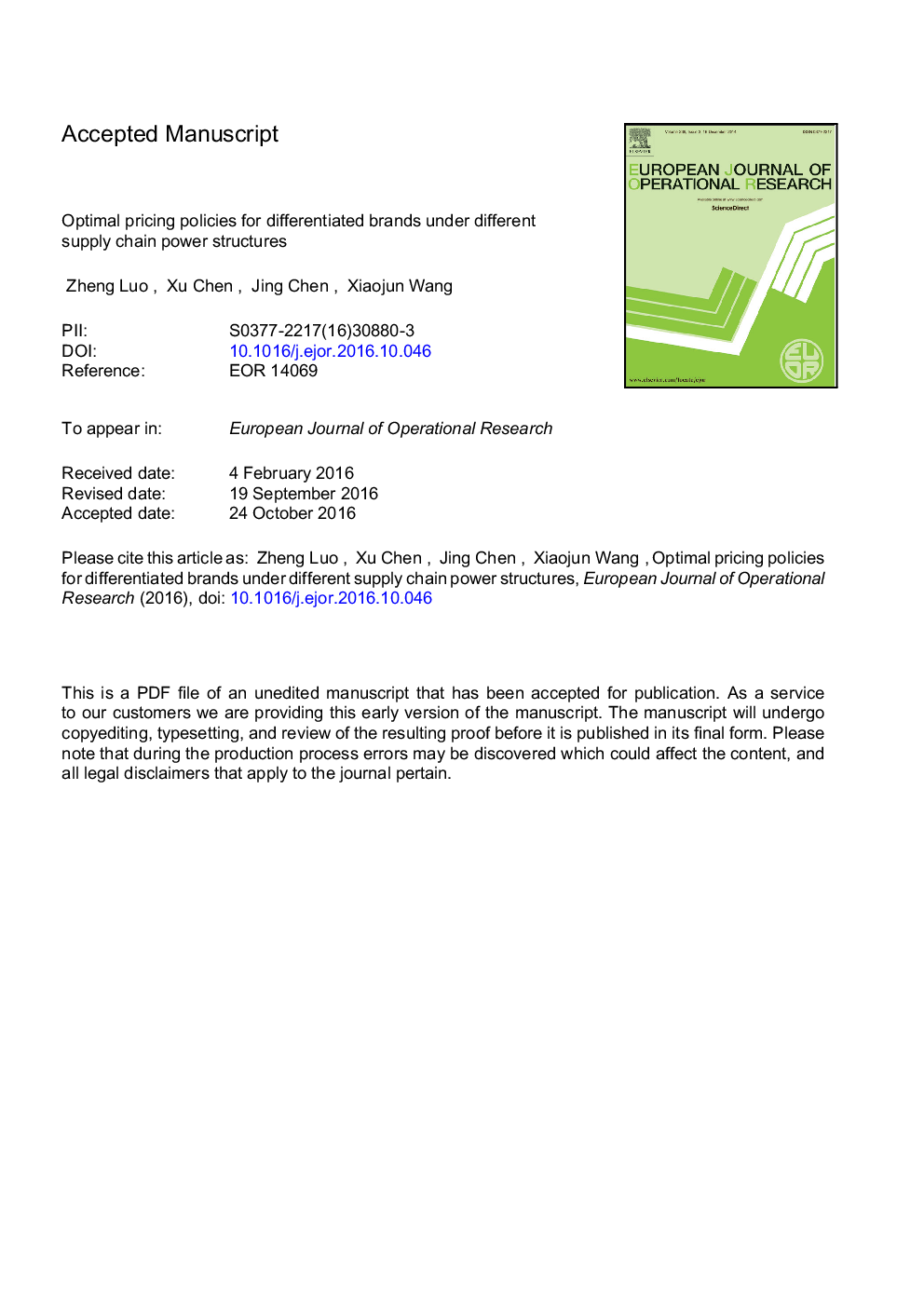| Article ID | Journal | Published Year | Pages | File Type |
|---|---|---|---|---|
| 4960180 | European Journal of Operational Research | 2017 | 47 Pages |
Abstract
We investigate a supply chain in which a retailer is supplied by two manufacturers with differentiated brands, a good brand and an average brand. The customers in the market are segmented based on value and brand preference, namely the customer acceptance of the average brand and the customer surplus for each brand. Both horizontal competition (between the two competing manufacturers) and vertical competition (between the manufacturers and the retailer) are considered through an exploration of different power structure combinations. Multiple-stage game models are developed to examine the impact of different power structures on the pricing decisions and the profits of the manufacturers and the retailer. We find that intensified competition between the two manufacturers hurts the manufacturers and benefits the retailer. No dominance among supply chain members (the two manufacturers and the retailer) leads to the highest profit for the entire supply chain. We also find that for the two competing manufacturers, being first to announce the pricing decision results in lower profit - the second to announce benefits from knowing the rival's price. This explains why rivals prefer not to reveal decisions on prices, bid rates, and contracts, as this information represents bargaining power. The impact of customer acceptance of the average brand is also analyzed.
Related Topics
Physical Sciences and Engineering
Computer Science
Computer Science (General)
Authors
Luo Zheng, Chen Xu, Chen Jing, Wang Xiaojun,
